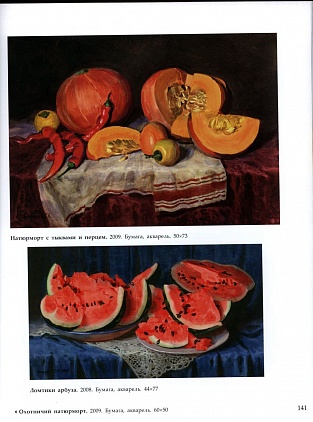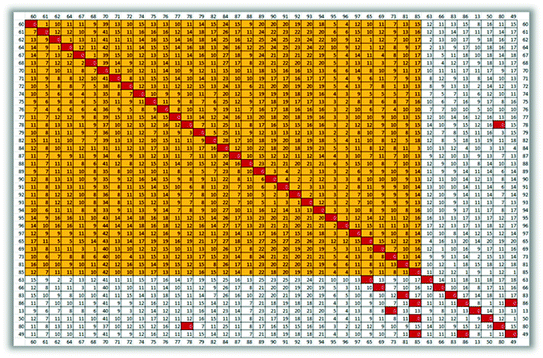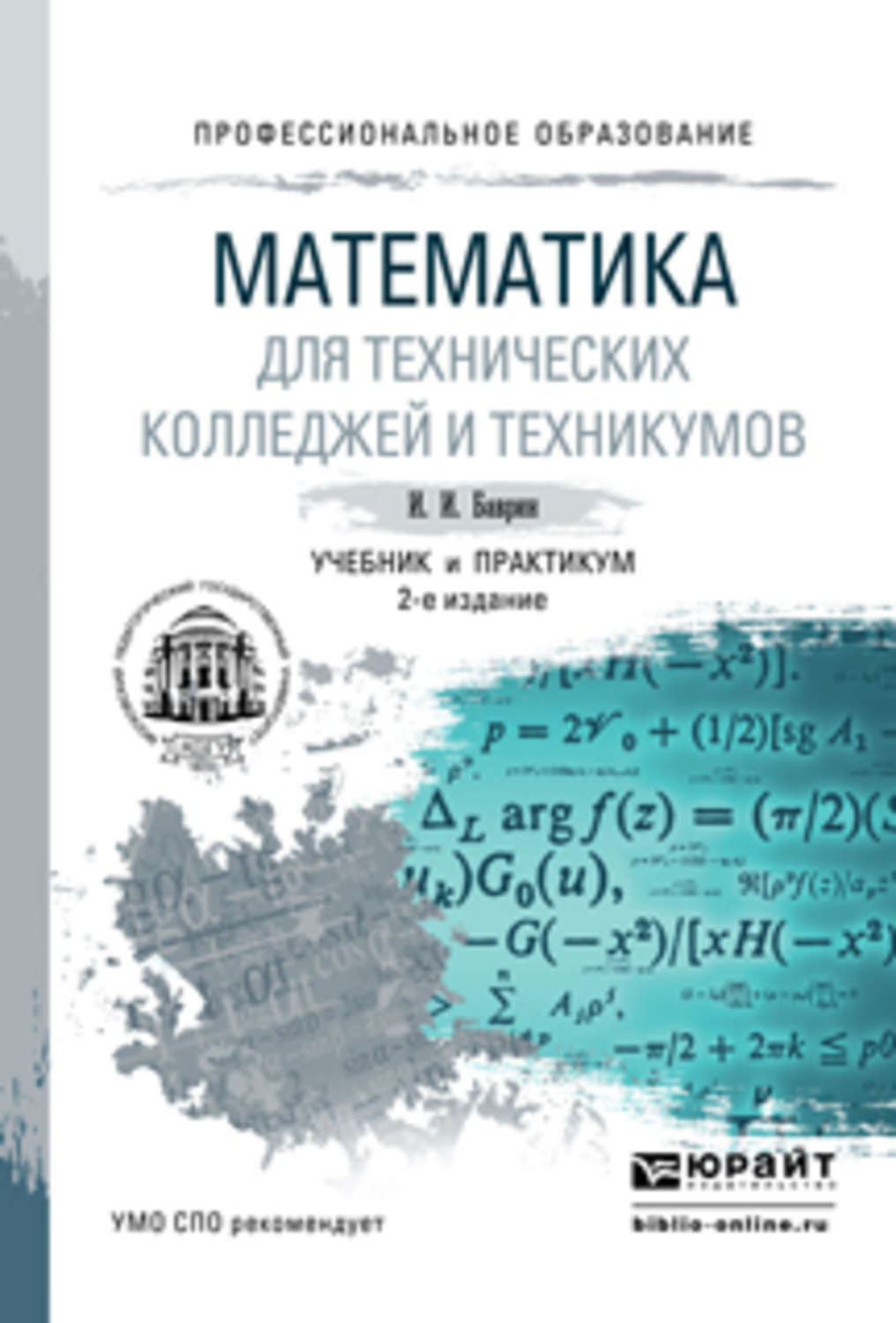Thermal properties of resistors. With increasing temperature, these resistors may lose power and resistance. For a standard resistor, the loss of power occurs at a temperature. Request full-text PDF. Vysshaya Shkola Proektirovanie elektricheskikh mashin: uchebnik dlya vuzov (Design of Electrical Machines: A University Textbook). MEXANIKA-MATEMATIKA FAKULTETI «Axborotlashtirish texnologiyalari» kafedrasi 5480100 – «Amaliy matematika va informatika» yo’nalishi 4 - bosqich talabalari uchun «Obyektga yo’naltirilgan vizual programmalashtirish» fani bo’yicha reyting tizimi asosida baholash MEZONLARI (.
DSP Required On-the-Job Training (R-06-01-13) Using the DSP Training Program Approved On-the-Job Training (OJTs) and Competency-Based Training Assessments (CBTAs) or Agency-Developed OJT Activities The Department encourages modification of the OJTs and CBTAs to fit the needs of the agency and the people it supports. Aug 16, 2018 - PLEDGE EXAMINATION ANSWERS – 60th Edition. Vice President or consult the National Leadership page at dsp.org for the name of your.
What are Chegg Study step-by-step Digital Signal Processing Solutions Manuals? Chegg Solution Manuals are written by vetted Chegg Digital Signal Processing experts, and rated by students - so you know you're getting high quality answers.
Solutions Manuals are available for thousands of the most popular college and high school textbooks in subjects such as Math, Science (, ), Engineering (, ), and more. Understanding Digital Signal Processing homework has never been easier than with Chegg Study. Why is Chegg Study better than downloaded Digital Signal Processing PDF solution manuals? It's easier to figure out tough problems faster using Chegg Study. Unlike static PDF Digital Signal Processing solution manuals or printed answer keys, our experts show you how to solve each problem step-by-step. No need to wait for office hours or assignments to be graded to find out where you took a wrong turn.
Vysshaya Matematika Uchebnik Dlya Vuzov Pdf
You can check your reasoning as you tackle a problem using our interactive solutions viewer. Plus, we regularly update and improve textbook solutions based on student ratings and feedback, so you can be sure you're getting the latest information available. How is Chegg Study better than a printed Digital Signal Processing student solution manual from the bookstore?
Our interactive player makes it easy to find solutions to Digital Signal Processing problems you're working on - just go to the chapter for your book. Hit a particularly tricky question? Bookmark it to easily review again before an exam. The best part? As a Chegg Study subscriber, you can view available interactive solutions manuals for each of your classes for one low monthly price. Why buy extra books when you can get all the homework help you need in one place?
• 45 of the required minimum OJT hours must have distribution of the hours in each of the six competency areas. See for more information. • DSPs must demonstrate all 81 interventional competencies. • If OJT/CBTA activities are eliminated or modified, make sure each required competency the OJT/CBTA covered is still included in the training. If an agency develops its own OJT training activities or modifies an approved OJT/CBTA, the modifications and a completed must be submitted for review and approved by the Department to ensure the changes meet content requirements.
Download Links Award Keylogger Pro 3.2 + Keygen. Award Keylogger Pro 3.2 + Keygen [CrackingPatching.com].zip. Report a Problem. Award Keylogger Pro 3.8 Award Keylogger Pro is a powerful software that offers surveillance to your computer's activities. It is an invisible program that keeps a record to the computer where it's. Logger Pro 3.8.6.1 + keygen crack patch. January 21, 2018. Copy Download Link (paste this to your browser) Comments. If you have software or keygen to share. Using warez version, crack, warez passwords, patches, serial numbers, registration codes, key generator, pirate key, keymaker or keygen for Logger Pro 3.15 license key is illegal and prevent future development of Logger Pro 3.15. Using warez version, crack, warez passwords, patches, serial numbers, registration codes, key generator, pirate key, keymaker or keygen for Logger Pro 3.13 license key is illegal and prevent future development of Logger Pro 3.13. Logger pro 3 8 6 keygen torrent.
Visshaya Matematika Uchebnik Dlya Vuzov Pdf
Abstract


The diachronic interpretation of Indo-European *hṷekṷ- / *heuk- “eye, to see”, Altaic *uka- “to notice, to understand” and Afro-Asiatic *Hwq- “to know”, originating from Nostratic *HuḲa “eye, to see”, allowed to establish both divergent and convergent types of linguistic relationship among them, for which the close (Indo-European, Altaic, Afro-Asiatic) and remote / distant (Indo-European / Afro-Asiatic and Altaic) types of language relationship have been established, depending on the action of the main phonomorphological and semantic regularities.
The degree of manifestation of phonomorphological laws indicates a close type of language relationship among Indo-European, Altaic and Afro-Asiatic language families. They are: 1) the law on the three-letter / three-phonemic root structure of an archetype (according to E. Benvenist), which corresponds to the law on the consonant root (according to A G. Belova): it helped to fix three phonemes in Indo-European *hṷekṷ- / *heuk-, Altaic *uka- and Afro-Asiatic *Hwq-, as well as to trace the reflexes of this structure in the genetic data material of these language families; 2) the law of the mora is fixed in the Indo-European *hṷekṷ- / *heuk-, Altaic *uka- and Afro-Asiatic *Hwq-, the forms of which correspond to a monosyllable structure, and mono- and multisyllable structures have been observed in the genetic data material; 3) the process of spirantisation consists in weakening the consonant phoneme /q/, i.e. the reflection /q/ into /k/ and /x/; 4) the process of “pharyngisation” can be traced at the end of monosyllabic words, where it could occur by analogy with those forms of the word where the consonant was intervocal; 5) the law on the pronunciation of short vowel phonemes /a/ and /u/, where such features are represented: 1) the degree of solution of the oral cavity; 2) hardness / softness (low tonality / high tonality); 3) absence or presence of labilisation; 6) the law of prosody, which consists in the realisation of stress in accordance with various languages; 7) the law of an open syllable.
The degree of phonomorphological manifestations indicates a remote / distant form of language relationship between Indo-European / Afro-Asiatic and Altaic language families, where one of the provisions of the phonetic prohibitions of Jucquо, i.e. when the initial and final laryngals are not allowed, is traced in the Indo-European *hṷekṷ- / *heuk- and Afro-Asiatic *Hwq-.
The degree of manifestation of semantic laws indicates a close type of language relationship among Indo-European, Altaic and Afro-Asiatic language families, where 2 lexico-semantic variants (LSV) were fixed: 1) somatism; 2) action. If in the Indo-European *hṷekṷ- / *heuk- “eye, to see” 2 LSVs are fixed: 1) somatism; 2) action, but in the Altaic *uka- “to notice, to understand”, including Turkic *uk(ā)- “to raise, to listen” and Mongolian *uk- “to notice”, as well as the Afro-Asiatic *Hwq- “to know” – only 1 LSV – 2) action.

References
Alekseyev, V. P. (1990). Istoriya pervobytnogo obshchestva: uchebnik dlya vuzov po spetsialnosti “Istoriya” [The history of primitive society: a textbook for universities in the specialty “History”]. Moskva: Vysshaya shkola.
Balanovskaya, Ye. V., Balanovskiy O. P. (2009). Geneticheskiye sledy istoricheskikh i doistoricheskikh migratsiy: kontinenty, regiony, narody [Genetic traces of historical and prehistoric migrations: continents, regions, peoples]. Vestnik VOGiS, 13 (2). S. 401–408.
Baychura, U. Sh. (1957). Nekotoryye voprosy fonetiki tuvinskogo yazyka po eksperimental'nym dannym [Some questions of the phonetics of the Tuvan language according to experimental data]. Un. zap. Kazanskogo gos. univ., 117(9). S. 119.
Belov, A. M. (2011). Problema mory v indoyevropeyskikh ablautnykh cheredovaniyakh: korni s tyazholymi bazami [The problem of pestilence in Indo-European ablaut alternations: roots with heavy bases]. Izvestiya Rossiyskoy akademii nauk. Seriya literatury i yazyka, 70 (5). S. 49–54.
Belova, A. G. (1991). Struktura semitskogo kornya i semitskaya morfologicheskaya sistema [The structure of the Semitic root and the Semitic morphological system]. Voprosy yazykoznaniya, 1. S. 79–90.
Benvenist, E. (1955). Indoyevropeyskoye imennoye slovoobrazovaniye [Indo-European nominal word formation]. per. V. V. Gornung. Moskva: Izd-vo inostrannoy literatury.
Brugmann, K. (1904). Kurze vergleichende Grammatik der Indogermanischen Sprachen [Short comparative grammar of Indo-European languages]. Auf Grund des fünfbandigen “Grindrisses der vergleichenden Grammatik der indogermanischen Sprachen”. von K. Brumgann und B. Delbrück verfasst. Strassburg: Verlag von Karl J. Trübner. Repr. 1933, 1970.
Dybo, V. A. (2006). Sravnitelno-istoricheskaya grammatika tyurkskikh yazykov. Pratyurkskiy yazyk-osnova. Kartina mira pratyurkskogo etnosa po dannym yazyka [Comparative historical grammar of the Turkic languages. The proto-language base. The picture of the world of the proto-language ethnic group according to the language]. pod red. E. R. Tenisheva i A. V. Dybo. Moskva: Nauka.
Dybo, V. A. (2013). Dialektnoye chleneniye praindoyevropeyskogo po aktsentologicheskim dannym [Dialect division of the pra-Indo-European according to accentological data]. Voprosy yazykovogo rodstva, 9. S. 93–108.
Ekkert, R. (1978). K voprosu germano-balto-slavyanskikh sootvetstviy [On the Question of German-Baltic-Slavic Associations]. Problemy obshchego i germanskogo yazykoznaniya. M.: Izd-vo Mosk. un-ta.
Gadzhiyeva, N. Z. (1997). Tyurkskiye yazyki [The Turkic languages]. Yazyki mira. Tyurkskiye yazyki. Moskva. S. 17–34.
Grine, Р. Е., Jungers, W. L., Schultz J. (1996). Phenetic affinities among early Ноmо crania from East and South Africa. Journal of Human Evolution, 30. Р. 189–225.
Illich-Svitych, V. M. (1963). Altayskiye dentalnyye: *t, *d, *ö [Altai dental: *t, *d, *ö]. Voprosy yazykoznaniya, 6. 37–57.
Jucquо, G. (1966). La structure des racines en indo-europeen envisagee d'un point de vue statistique [The structure of the roots in Indo-European considered from a statistical point of view]. Linguistic research in Belgium. Wetteren. P. 61.
Kairzhanov, A. K. (2013). Sravnitelnaya fonetika tyurkskikh yazykov [Comparative phonetics of the Turkic languages]. Astana: YENU imeni N. G. Shaymerdinovoy i A. K. Kairzhanova. Astana.
Kairzhanov, A. K. (2016). Sravnitelno-istoricheskaya grammatika tyurkskikh yazykov [Comparative historical grammar of the Turkic languages]. Astana: YENU imeni L. N. Gumileva.
Koleva-Zlateva, Zh. (2005). O priyemakh kognitivnogo podkhoda v etimologicheskikh issledovaniyakh [On the methods of the cognitive approach in etymological studies]. Slavica, 34. S. 23–42.
Kotvich, V. (1962). Issledovaniye po altayskim yazykam [Research on the Altai languages]. per. s polskogo. Moskva.
Martynov, V. V. (1963). Slavyano-germanskoye leksicheskoye vzaimodeystviye drevneyshey pory: K probleme prarodiny slavyan [Slavic-German lexical interaction of the most ancient pores: On the problem of the ancestral homeland of Slavs]. Minsk: Izd-vo AN BSSR.
Mayzel, S. S. (1983). Put razvitiya kornevogo fonda semitskikh yazykov [The development path of the root fund of Semitic languages] / pod red. i predisl. Militarev A. Yu. Moskva.
Nafikov, Sh V. (2003). Borealnyye elementy v bashkirskom yazyke [Boreal elements in the Bashkir language]. Ufa: Gilem.
Ramstedt, G. Y. (1957). Vvedeniye v altayskoye yazykoznaniye: Morfologiya [Introduction to Altai Linguistics: Morphology]. M.: Izd-vo inostr. lit.
Rybin, V. V. (2012). Fonetika yaponskogo yazyka [Phonetics of the Japanese language]. SPb.: Giperion.
Serebrennikov, B. A. (1974). Veroyatnostnyye obosnovaniya v komparativistike [Probabilistic justification in Comparative Studies]. M.: Nauka.
Shcherbak, A. M. (1970). Sravnitelnaya fonetika tyurkskikh yazykov [Comparative phonetics of Turkic languages]. Leningrad: Nauka, Leningradskoye otdeleniye.
Trubetskoy, N. S. (1987). Mysli ob indoyevropeyskoy probleme [Thoughts on the Indo-European problem]. Izbrannyye trudy po filologii. Moskva. S. 44–59.
Vladimirtsov, B. Ya. (1929). Sravnitelnaya grammatika mongolskogo pismennogo yazyka i khalkhaskogo narechiya [Comparative grammar of the Mongolian written language and Khalkha dialect]. L.
Sources of Illustrative Material:
Български – Български етимологичен речник [Bulgarian Etymological Dictionary]. Т. I–. София, 1971.
Besim – Besim, A. Dîvânu Lûgat-it Türk Tercümesi. Ankara, 1939 (I), 1940 (II), 1941 (III).
Chernykh – Chernykh, P. Ya. (1999). Istoriko-etimologicheskiy slovar sovremennogo russkogo yazyka [Historical and etymological dictionary of the modern Russian language]. 3-ye izd., stereotip. T. I–II. Moskva.
Gombocz – Gombocz, Z. (1912). Die bulgarisch-türkischen Lehnwörter in der ungarischen Sprache [The Bulgarian-Turkish loan words in the Hungarian language]. Helsingfors, 1912.
Herkunftswörterbuch – Herkunftswörterbuch der deutschen Sprache [Origin dictionary of the German language]. Bearbeitet von der Dudenredaktion unter Leitung von Paul Grebe in Fortführung der neuhochdeutschen Sprache von Konrad Dun. Mannheim: Bibliographisches Institut, 1963.
Illich-Svitych1 – Illich-Svitych, V. M. Opyt sravneniya nostraticheskikh yazykov (semito-khamitskiy, kartvelskiy, indoyevropeyskiy, ural'skiy, dravidiyskiy, altayskiy) [The Experience of Nostratic Languages Comparison (Semitic-Hamitic, Kartvelian, Indo-European, Uralic, Dravidian, Altaic)]. pod red. V. A. Dybo. Moskva, 1971, Vol. 1.; 1973, Vol. 2. 1984, Vol. 3.
Kluge – Kluge, F. (1963). Etymologisches Wörterbuch der deutschen Sprache [Etymological dictionary of the German language]. Berlin.
Ligeti, L. (1935). Mongolos joverényszavaink kérdéséhez [To our Mongolian word of mouth]. NyK 49.
Pokorny – Pokorny, J. (1949–1959). Indogermanisches etymologisches Wörterbuch [Indo-European etymological dictionary]. Bern.
Preobrazhenskiy – Preobrazhenskiy, A. G. (1910–1914). Etimologicheskiy slovar russkogo yazyka [Etymological Dictionary of the Russian Language]. T. I–II. 1. Moskva, 1910–1914. – Reprodutsirovano s vypuskov 1910–1914 godov i poslednego vypuska 1949 g., AN SSSR.
Radlov – Radlov, V .V. (1899–1911). Opyt slovarya tyurkskikh narechiy [Dictionary of Turkic dialects experience]. 1–4. SPb.
Skok, P. (1971–1974). Etimologijski rječnik hrvatskoga ili srpskoga jezika [Etymological dictionary of Croatian or Serbian]. I–IV. Zag-reb.
SUM – Slovnyk ukrayinskoyi movy [Dictionary of the Ukrainian language]: v 11 tomakh. Tom 7, 1976. S. 127.
Wahrig, G. (1985). Deutsches Wörterbuch (Mit einem “Lexikon der Deutschen Sprachlehre”) [German dictionary (with a “Lexikon der Deutschen Sprachlehre”)]. Die Neuausgabe 1980 wurde bearbeitet von Ursula Herman. Gütersloh: Bertelsmann Lexikon.
Walde – Walde, A. (1938). Lateinische etymologische Wörterbuch [Latin etymological dictionary]. 3. umgearbei-tete Auflage von J. B. Hofmann. B. I–III. Heidelberg.
Zajqczkowski – Zajqczkowski, A. (1934). Studja nad jqzykiem staroosmahskim. Calila et Dïmna. Krakow, 1934.


